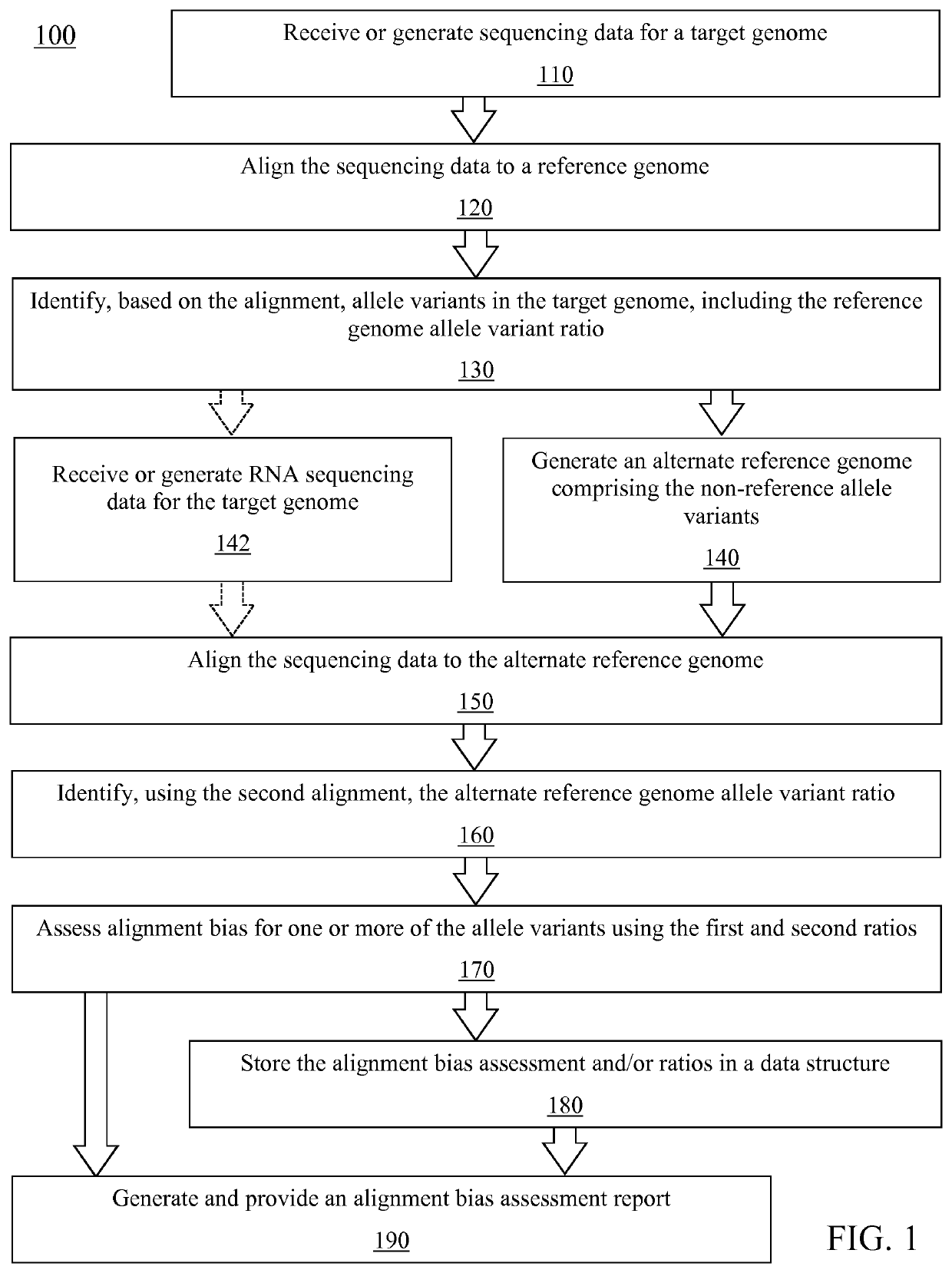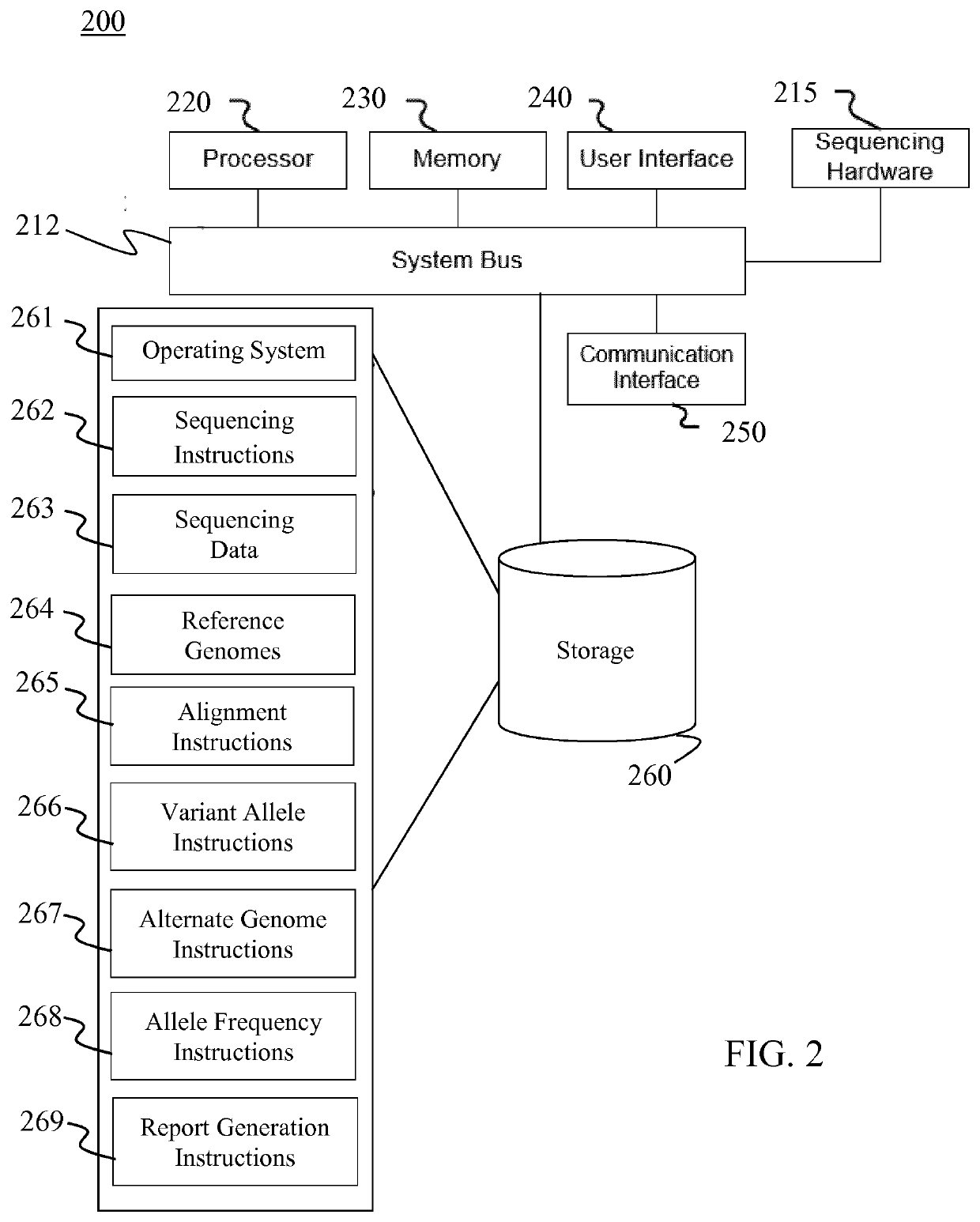Method for assessing genome alignment basis
a genome alignment and basis technology, applied in the field of methods and systems for assessing alignment bias in nextgeneration sequencing analysis, can solve the problems of inability to account for all variation among the many polymorphic locations within the population, slow and computationally expensive approach, and inability to include all variation within the population, so as to reduce alignment bias
- Summary
- Abstract
- Description
- Claims
- Application Information
AI Technical Summary
Benefits of technology
Problems solved by technology
Method used
Image
Examples
Embodiment Construction
[0024]The present disclosure describes various embodiments of a system and method for analyzing genomic sequencing using an alternate reference genome generated from heterozygous alleles identified in the analyzed genome. More generally, Applicant has recognized and appreciated that it would be beneficial to provide a method that reduces alignment bias during sequencing read alignment. The system, which may optionally comprise a sequencing platform, generates or receives sequencing data comprising sequencing reads from a target genome. The reads are aligned to a reference genome to identify heterozygous locations, the variant alleles at each heterozygous location, and the ratio of the variant alleles at each heterozygous location. An alternate reference genome is generated using the identified non-reference allele variant for each of the identified heterozygous locations. The system then aligns the same set of reads to the generated alternate reference genome and identifies the rati...
PUM
 Login to View More
Login to View More Abstract
Description
Claims
Application Information
 Login to View More
Login to View More - R&D
- Intellectual Property
- Life Sciences
- Materials
- Tech Scout
- Unparalleled Data Quality
- Higher Quality Content
- 60% Fewer Hallucinations
Browse by: Latest US Patents, China's latest patents, Technical Efficacy Thesaurus, Application Domain, Technology Topic, Popular Technical Reports.
© 2025 PatSnap. All rights reserved.Legal|Privacy policy|Modern Slavery Act Transparency Statement|Sitemap|About US| Contact US: help@patsnap.com


